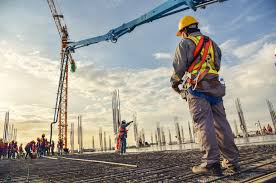In the intricate ballet of economic sectors that choreograph the dance of global development, the construction sector plays a pivotal role. It is not just a contributor to GDP; it is the bedrock on which societies construct their dreams, businesses erect their headquarters, and families build their homes.
Within this sector, resilience has emerged not merely as a buzzword but as an essential strategy for survival and growth. Amidst this narrative of endurance and adaptability, the efforts of entities such as Silver Lake Builder of Los Angeles stand out as beacons of innovation and sustainability, guiding the industry toward a resilient future.
The Ever-Evolving Landscape of Construction
Gone are the days when construction meant brick and mortar. Today, the industry is a symphony of technology and sustainability, with each element playing a crucial role in shaping the future. Digital transformation has taken the lead, with tools like Building Information Modeling (BIM) revolutionizing the way projects are visualized, planned, and executed. This digital model not only enhances precision but also facilitates better communication among stakeholders, ensuring that everyone involved is on the same page.
Parallelly, sustainability has shifted from being an optional luxury to a mandatory norm. Green building practices are not just about reducing the environmental footprint but also about constructing edifices that are energy efficient, cost-effective, and healthy for occupants. The adoption of renewable energy sources, sustainable materials, and water conservation techniques underscores the industry’s commitment to the planet and future generations.
Challenges Facing the Construction Sector
Despite its significant strides, the construction sector confronts a multitude of challenges. Economic fluctuations remain a perennial concern, affecting project financing and timelines. The construction sector’s cyclical nature means that it often feels the brunt of economic downturns more acutely, requiring companies to have robust financial strategies and contingency plans in place.
Regulatory compliance adds another layer of complexity. Navigating the maze of local and international standards demands not only expertise but also flexibility to adapt to changing laws and norms. This regulatory landscape is in constant flux, reflecting the evolving priorities of societies, from safety standards to environmental regulations.
The human element, the workforce, is perhaps the most critical challenge. The sector is grappling with a skills gap, exacerbated by an aging workforce and the rapid pace of technological change. Bridging this gap requires a concerted effort in training and development, ensuring that the workforce is equipped with the skills needed for tomorrow’s construction sites.
Building Resilience in Construction
Building resilience in the construction sector is akin to constructing a structure that can withstand the tests of time and nature. Financial stability is foundational, requiring not just effective budget management but also strategic foresight to navigate economic uncertainties. Diversification, risk assessment, and agile project management are essential components of a resilient financial strategy.
Technological innovation is another pillar of resilience. From AI and machine learning to robotics and 3D printing, technology offers the tools to make construction processes more efficient, safer, and less resource-intensive. Embracing these innovations can enhance competitiveness and pave the way for new business models and opportunities.
Yet, technology and finances alone do not suffice. At the heart of resilience lies the human factor—the workforce. Investing in training and development is crucial. It’s about cultivating a culture that values continuous learning, creativity, and adaptability. Skilled workers are the industry’s most valuable asset, and empowering them is key to building resilience.
Embed Code
Case in Point: Silver Lake Builder of Los Angeles
In the vibrant urban landscape of Los Angeles, Silver Lake Builder embodies the principles of resilience through its innovative and sustainable practices. This entity has not only adapted to the challenges of the construction sector but has also thrived by embracing technological advancements and sustainable building practices. Their projects serve as examples of how modern construction techniques can harmonize with environmental stewardship, thereby crafting spaces that are both functional and sustainable.
Silver Lake Builder’s commitment to resilience is evident in their meticulous planning, adherence to sustainability standards, and openness to technological innovations. Their approach underscores the belief that facing challenges is not just about survival but about thriving through innovation and sustainability.
The Path Forward
As the construction sector looks to the future, the path to resilience is clear. It will be paved with advancements in technology, deeper commitments to sustainability, and a renewed focus on workforce development. The sector must continue to evolve, embracing new tools and practices to meet the demands of a rapidly changing world.
Collaboration will also play a critical role. Building resilience is not a solitary endeavor but a collective one, involving partnerships between governments, businesses, and communities. Together, these stakeholders can drive the construction sector toward a future where resilience is not just a response to challenges but a proactive strategy for sustainable growth.
Conclusion
Constructing resilience in the construction sector is a complex, multifaceted endeavor that requires attention to financial stability, technological innovation, and human capital development. It demands a forward-looking approach that anticipates challenges and embraces change. Companies like Silver Lake Builder of Los Angeles illustrate the potential of this approach, proving that with the right strategies, the construction sector can not only navigate the challenges of today but also build the foundations for a resilient and sustainable future.
Write and Win: Participate in Creative writing Contest & International Essay Contest and win fabulous prizes.

















